What Are Chatbots and Why Should You Care?
Ilias Ism
Jul 29, 2024
13 min read
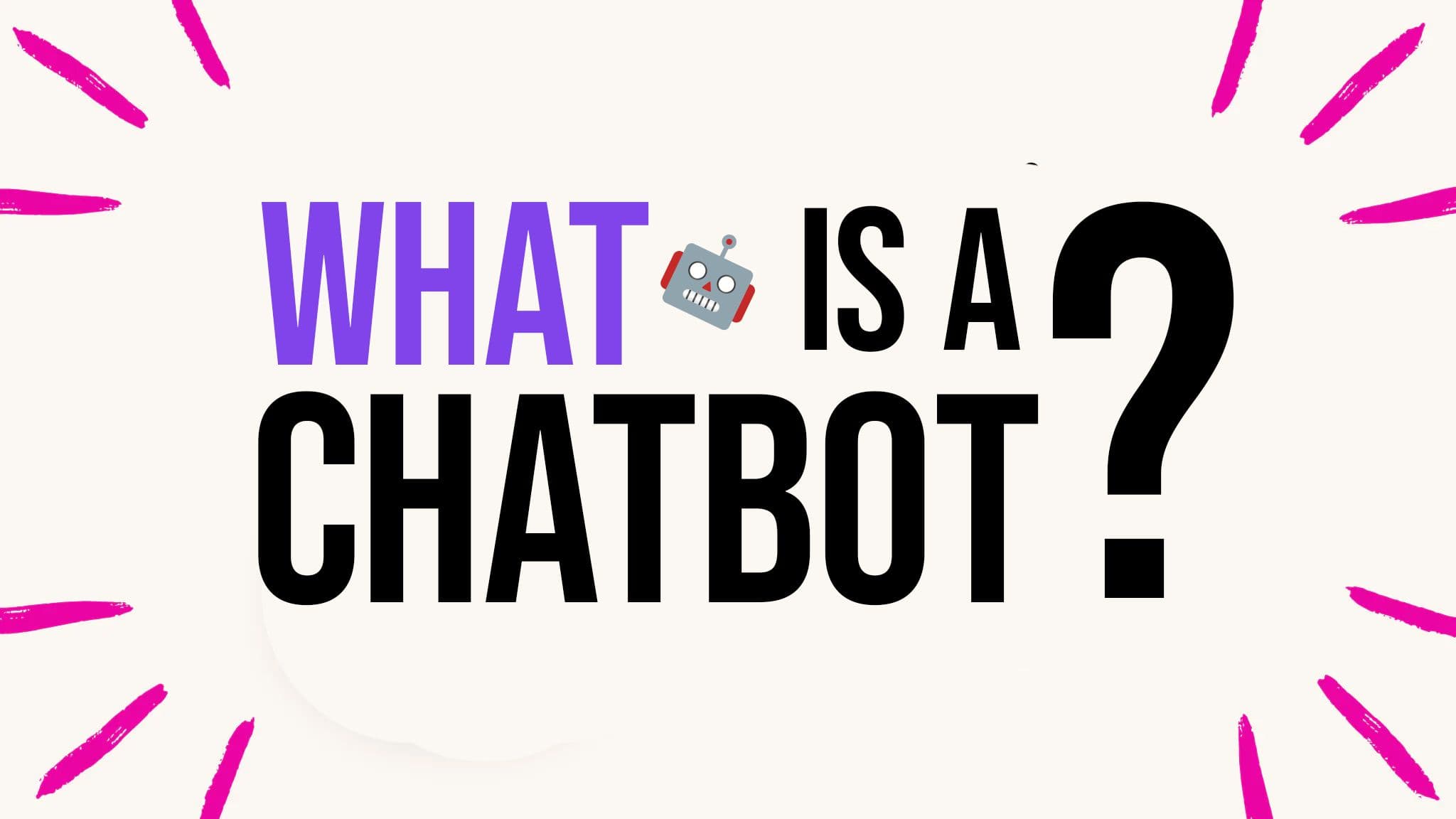
In 2024, chatbots transform how businesses engage with customers and streamline operations. This comprehensive guide explores the world of chatbots, from their basic functionality to advanced AI capabilities.
Discover how chatbots are revolutionizing industries, enhancing customer experiences, and driving operational efficiency. Learn about:
- The evolution of chatbot technology
- Key components and types of chatbots
- Benefits and challenges of implementation
- Best practices for successful chatbot integration
- Future trends shaping the chatbot landscape
Whether you're a small business owner or a large enterprise, understanding chatbots is crucial in today's AI-driven world.
Let's dive into the exciting realm of chatbot technology and explore how it can propel your business forward in 2024 and beyond.
What is a chatbot?
A chatbot is an artificial intelligence (AI) software designed to simulate human-like conversations through text or voice-based interactions.
These digital assistants can understand and respond to user queries, perform tasks, and provide information across various platforms such as websites, messaging apps, and voice assistants.
The sophistication of modern chatbots has grown exponentially, with platforms like Chatbase offering advanced AI-driven solutions that can be customized to fit specific business needs.
Key characteristics of chatbots include:
- Natural Language Processing (NLP): This enables chatbots to understand and interpret human language, allowing for more natural and context-aware conversations.
- Machine Learning: Modern chatbots can learn and improve from interactions, continuously enhancing their performance over time.
- Task Automation: Chatbots can perform predefined or learned tasks based on user input, streamlining various business processes.
- 24/7 Availability: Unlike human agents, chatbots provide round-the-clock service without fatigue or downtime.
- Scalability: Chatbots can handle multiple conversations simultaneously, allowing businesses to scale their customer service operations efficiently.
History of Chatbots
The evolution of chatbots spans several decades, marking significant milestones in artificial intelligence and natural language processing:
- 1966: ELIZA, created by Joseph Weizenbaum at MIT, was one of the first chatbots, simulating a psychotherapist using pattern matching and substitution methodology.
- 1972: PARRY, developed by Kenneth Colby, simulated a person with paranoid schizophrenia, introducing more complex conversational abilities.
- 1995: A.L.I.C.E. (Artificial Linguistic Internet Computer Entity) introduced more advanced natural language processing, using heuristic pattern matching.
- 2001: SmarterChild, available on AOL Instant Messenger and MSN Messenger, gained widespread use, offering personalized conversations and access to news, weather, and other information.
- 2011: Apple introduced Siri, bringing voice-activated virtual assistants to mainstream consumers and paving the way for more advanced AI interactions.
- 2016: Facebook launched its Messenger Platform, allowing businesses to create chatbots for customer interaction, significantly expanding the chatbot ecosystem.
- 2020-Present: Advanced AI models like GPT-3 and GPT-4 have dramatically improved chatbot capabilities, leading to more human-like interactions and expanding the potential applications across industries.
This progression has led to the current state of chatbot technology, where platforms like Chatbase offer sophisticated, customizable AI chatbots that can be trained on specific business data for highly accurate and relevant interactions.
How Chatbots Work
Chatbots operate through a complex interplay of algorithms and AI technologies. Understanding this process is crucial for businesses looking to implement or optimize their chatbot solutions:
1. Input Processing
When a user interacts with a chatbot, their input (text or voice) is received and processed. This initial step involves tokenization (breaking the input into individual words or subwords) and normalization (standardizing the text format).
2. Intent Recognition
Using Natural Language Processing (NLP) algorithms, the chatbot analyzes the processed input to determine the user's intent. This step is critical in understanding what the user is trying to achieve or ask.
3. Entity Extraction
The chatbot identifies and extracts key information (entities) from the user's input. This could include names, dates, locations, or specific data points relevant to the conversation.
4. Dialog Management
A crucial component of chatbot functionality is maintaining context throughout the conversation. The dialog management system keeps track of the conversation flow, previous interactions, and user preferences to ensure coherent and relevant responses.
5. Response Generation
Based on the recognized intent, extracted entities, and conversation context, the chatbot formulates a response. This can be done through predefined scripts, retrieval-based methods, or generative AI models that create unique responses.
6. Output Delivery
The generated response is then delivered to the user through the chosen interface, whether it's text displayed in a chat window or synthesized speech in a voice interaction.
7. Learning and Improvement
Advanced chatbots, particularly those powered by machine learning, can learn from interactions to improve their performance over time. This continuous learning process enhances the accuracy and relevance of responses.
For businesses looking to implement chatbots, platforms like Chatbase offer easy-to-use solutions that simplify this complex process, allowing for the creation of sophisticated chatbots without extensive technical knowledge.
Types of Chatbots
Chatbots come in various forms, each suited to different business needs and use cases:
1. Rule-Based Chatbots
These chatbots follow predefined rules and decision trees.
They are suitable for simple, structured conversations and can handle specific commands and questions effectively.
While limited in flexibility, they are reliable for straightforward tasks.
2. AI-Powered Chatbots
Utilizing machine learning and advanced NLP, these chatbots can understand context and intent, providing more natural and dynamic conversations.
They can handle complex queries and learn from interactions, continuously improving their performance.
Platforms like Chatbase specialize in creating AI-powered chatbots that can be customized for specific business needs.
3. Hybrid Chatbots
Combining rule-based logic with AI capabilities, hybrid chatbots offer a balance between structured responses and flexible, context-aware interactions.
They can handle both simple and complex queries effectively.
4. Voice-Activated Chatbots
These chatbots respond to voice commands and are often integrated with smart speakers or virtual assistants.
They're becoming increasingly popular for hands-free interactions in various settings.
5. Task-Specific Chatbots
Designed for particular functions like customer support, lead generation, or e-commerce assistance, these chatbots are optimized for specific industry or business needs.
For instance, e-commerce chatbots can significantly enhance the online shopping experience.
6. Open-Domain Chatbots
Capable of engaging in general conversations on a wide range of topics, these chatbots are often used for entertainment or as digital companions.
They showcase the breadth of AI language capabilities.
The choice of chatbot type depends on the specific needs of a business. For example, a customer support chatbot might be a hybrid model, combining rule-based efficiency for common queries with AI flexibility for more complex issues.
Chatbase offers solutions that can be tailored to various chatbot types, allowing businesses to choose the most suitable option for their needs.
Key Components of Chatbots
Modern chatbots comprise several crucial components that work together to create effective and engaging conversational experiences:
1. Natural Language Processing (NLP)
At the heart of chatbot functionality is NLP, which enables the understanding and interpretation of human language. This component includes techniques like tokenization, part-of-speech tagging, and named entity recognition. Advanced NLP allows chatbots to grasp context, sentiment, and even subtle nuances in user input, leading to more natural and accurate responses.
2. Machine Learning Algorithms
These algorithms allow chatbots to learn from data and improve their performance over time. This includes both supervised learning, where the chatbot is trained on labeled data, and unsupervised learning, where it identifies patterns in user interactions. The continuous learning capability is crucial for chatbots to stay relevant and effective in dynamic business environments.
3. Dialog Management System
This system manages the flow of conversation, maintaining context and ensuring coherent interactions. It keeps track of the conversation history, user preferences, and the current state of the dialogue, allowing the chatbot to provide contextually appropriate responses even in complex, multi-turn conversations.
4. Knowledge Base
The knowledge base serves as the repository of information the chatbot can access. This can include FAQs, product information, or general knowledge relevant to the chatbot's purpose. For businesses, integrating a comprehensive and up-to-date knowledge base is crucial for providing accurate and helpful responses. Platforms like Chatbase allow for easy training of chatbots with custom business data, ensuring that the knowledge base is tailored to specific business needs.
5. Integration Capabilities
Modern chatbots need to seamlessly connect with external systems such as CRM platforms, databases, and other business tools. This integration allows chatbots to access real-time data, perform actions on behalf of users, and provide a more comprehensive service. For instance, integrating chatbots with WordPress or Wix websites can significantly enhance user experience on these platforms.
6. User Interface
The front-end where users interact with the chatbot is crucial for user engagement. This can be text-based, voice-activated, or even include graphical elements. A well-designed interface should be intuitive, accessible, and aligned with the brand identity of the business, reflecting the approach seen in tools like Flux 1 AI, which uses AI to produce compelling visual content.
7. Analytics and Reporting
Robust analytics tools are essential for monitoring chatbot performance and user interactions. These insights help businesses understand user behavior, identify areas for improvement, and measure the ROI of their chatbot implementation. Chatbase offers detailed chatbot analytics to help businesses optimize their chatbot strategies.
Benefits of Using Chatbots
Implementing chatbots offers numerous advantages for businesses across various sectors:
1. 24/7 Availability
Chatbots provide round-the-clock customer service without the limitations of human working hours. This constant availability ensures that customer queries are addressed promptly, regardless of time zones or holidays, leading to improved customer satisfaction and loyalty.
2. Cost Reduction
By automating routine tasks and inquiries, chatbots significantly reduce the workload on human agents. This automation leads to lower operational costs in customer service departments, allowing businesses to allocate resources more efficiently. The cost-effectiveness of chatbots makes them particularly valuable for small businesses looking to enhance their customer support.
3. Improved Customer Experience
Chatbots offer instant responses to queries, dramatically reducing wait times. They provide consistent service quality across interactions, ensuring that every customer receives prompt and accurate information. This immediacy and reliability contribute to an overall enhanced customer experience.
4. Scalability
One of the most significant advantages of chatbots is their ability to handle multiple conversations simultaneously. This scalability allows businesses to manage high volumes of customer interactions during peak times without the need for additional staffing.
5. Data Collection and Analysis
Through their interactions, chatbots gather valuable customer insights. This data can be analyzed to improve products, services, and marketing strategies. Utilizing a proxy scraper can enhance data collection efforts by accessing information from various sources without restrictions. The ability to collect and process large amounts of customer data in real-time provides businesses with actionable insights for continuous improvement.
6. Increased Efficiency
By automating repetitive tasks, chatbots free up human agents to focus on more complex issues that require empathy and critical thinking. This division of labor leads to more efficient use of human resources and improved overall productivity. Teams can further enhance these efficiencies by implementing AI for teams platforms that support shared agents, prompt libraries, and multi-user collaboration in a centralized environment.
7. Lead Generation and Qualification
Chatbots excel at engaging potential customers and gathering initial information. They can qualify leads before human intervention, ensuring that sales teams focus their efforts on the most promising prospects. This capability makes chatbots a powerful tool for lead generation and sales optimization.
8. Personalization
Advanced AI-powered chatbots can provide tailored recommendations and responses based on user data and behavior patterns. This level of personalization enhances customer engagement and can significantly improve conversion rates in e-commerce and other sales-driven environments.
9. Multilingual Support
Many modern chatbots, including those offered by Chatbase, can provide support in multiple languages. This capability allows businesses to expand their global reach and cater to a diverse customer base without the need for multilingual human agents.
10. Consistency in Brand Voice
Chatbots maintain a consistent brand tone and message across all interactions. This consistency helps reinforce brand identity and ensures that all customer interactions align with the company's values and communication style.
Challenges and Limitations
While chatbots offer numerous benefits, they also face several challenges:
1. Natural Language Understanding
Despite advancements in NLP, chatbots can still struggle with interpreting complex or ambiguous queries. Understanding context, sarcasm, or idiomatic expressions remains a challenge for many chatbot systems.
2. Limited Emotional Intelligence
Most chatbots lack the ability to recognize and respond appropriately to human emotions. This limitation can lead to inappropriate responses in sensitive situations, potentially damaging customer relationships.
3. Data Privacy and Security
As chatbots handle customer data, using phishing simulation software alongside them can raise user awareness while ensuring the security and privacy of that information is paramount. In general, commercial security requires robust, integrated measures-such as encryption, access controls, and regular audits-to protect businesses and their customers from threats like data breaches and unauthorized access. Businesses must address concerns about data collection, storage, and potential vulnerabilities to cyber attacks. Platforms like Chatbase prioritize GDPR compliance to address these concerns.
4. Integration Complexities
Integrating chatbots with existing systems and databases can be challenging, potentially leading to data silos and inconsistencies. Seamless integration is crucial for chatbots to access necessary information and provide accurate responses.
5. Maintenance and Updates
Chatbots require regular updates to their knowledge bases and algorithms to remain effective. This ongoing maintenance can be resource-intensive, requiring dedicated teams to monitor and improve chatbot performance.
6. User Acceptance
Some users may prefer human interaction over chatbots, especially for complex or emotionally sensitive issues. Balancing automation with human touch is crucial for maintaining positive customer relationships.
7. Language and Cultural Nuances
Chatbots may struggle with understanding and responding to cultural-specific contexts and language nuances, which can be particularly challenging for businesses operating in multiple regions.
Chatbots in Various Industries
Chatbots have found applications across numerous sectors, revolutionizing customer interactions and internal processes:
1. E-commerce
In online retail, chatbots assist with product recommendations, order tracking, and customer support. They can significantly enhance the shopping experience by providing personalized suggestions and instant assistance. For more insights, explore our guide on e-commerce chatbot use cases.
2. Healthcare
Chatbots in healthcare perform tasks such as symptom checking, appointment scheduling, and medication reminders. They play a crucial role in providing initial health assessments and managing patient inquiries, improving access to healthcare information. These tools are often developed and deployed through healthcare IT solutions, which support the integration of chatbots into clinical workflows and patient communication systems.
3. Banking and Finance
Financial institutions use chatbots for account inquiries, transaction assistance, and fraud detection alerts.
These AI assistants help streamline customer service and provide quick access to financial information and services.
4. Travel and Hospitality
In this sector, chatbots assist with booking, travel recommendations, and customer support during trips.
They enhance the travel experience by providing real-time information and assistance to travelers. For example, Cruise America, a company offering RV rental in San Francisco, uses chatbots to help customers find the perfect vehicle, check availability, provide pricing information, and guide them through the booking process.
5. Education
Educational institutions employ chatbots for student support, course recommendations, and administrative assistance.
These AI tools help manage student inquiries and provide information about courses and campus services.
6. Human Resources
Implementing an AI HR chatbot enhances these processes by providing instant support, reducing manual workload, and ensuring employees receive timely responses.
This application streamlines HR processes and improves employee access to information.
7. Real Estate
In real estate, chatbots assist with property searches, scheduling viewings, and answering property-related queries.
They help streamline the house-hunting process for potential buyers and renters.
8. Customer Support
Across all industries, chatbots play a crucial role in customer support, handling ticket creation, basic troubleshooting, and routing complex issues to human agents.
For best practices in implementing customer support chatbots, refer to our comprehensive guide.
Chatbot Development Platforms
Several platforms facilitate chatbot development, catering to different needs and technical expertise levels:
1. Chatbase
Chatbase stands out as a leading AI chatbot platform, offering custom data training capabilities, easy integration with various platforms, and advanced analytics.
It's particularly suited for businesses looking to create sophisticated, AI-driven chatbots tailored to their specific needs.
2. Dialogflow (Google)
This natural language understanding platform is known for its integration with Google Cloud services, making it a popular choice for developers working within the Google ecosystem.
3. Microsoft Bot Framework
Offering comprehensive tools for building enterprise-grade chatbots, this platform integrates well with Azure cognitive services, appealing to businesses already using Microsoft technologies.
4. IBM Watson Assistant
Known for its advanced natural language processing capabilities, IBM Watson Assistant is favored by enterprises looking for robust, AI-powered conversational platforms.
5. Amazon Lex
This platform is ideal for creating conversational interfaces for applications, with seamless integration into AWS services.
6. ManyChat
Focused on creating chatbots for marketing and customer support, ManyChat is particularly popular for Facebook Messenger and Instagram integrations.
7. Rasa
An open-source machine learning framework for chatbots, Rasa offers high customizability and is favored by developers who prefer more control over their chatbot's functionality.
When choosing a chatbot development platform, consider factors such as ease of use, integration capabilities, scalability, and the level of customization required.
For businesses looking for an all-in-one solution with advanced AI capabilities, Chatbase offers a compelling option.
To explore more about creating chatbots without coding, check out our guide on how to create your own chatbot without coding.
Future Trends in Chatbot Technology
The chatbot landscape is continuously evolving, with several exciting trends shaping the future of this technology:
1. Advanced Natural Language Understanding
Future chatbots will demonstrate significantly improved context interpretation and sentiment analysis capabilities. This advancement will enable more nuanced and human-like conversations, allowing chatbots to handle complex, multi-turn dialogues with ease. The ability to understand and respond to subtle contextual cues will make interactions more natural and effective.
2. Enhanced Personalization
AI-driven personalization will reach new heights, with chatbots leveraging deep learning to provide highly tailored experiences. By analyzing user behavior, preferences, and historical data, chatbots will offer increasingly relevant and personalized responses and recommendations. For insights on implementing AI personalization, refer to our guide on AI personalization strategies.
3. Voice-Enabled Chatbots
As voice recognition technology improves, we'll see a surge in voice-enabled chatbots integrated with various devices and platforms. These chatbots will offer more natural voice interactions, making them ideal for hands-free environments and accessibility applications.
4. Emotional Intelligence
Future chatbots will be equipped with advanced emotional intelligence capabilities, allowing them to recognize and respond appropriately to human emotions. This development will enable more empathetic and context-aware interactions, particularly valuable in customer service and healthcare applications.
5. Augmented Reality (AR) Integration
The integration of chatbots with AR technology will open new possibilities for visual assistance. In retail, for example, chatbots could provide virtual product demonstrations, while in technical support, they could offer visual guidance for troubleshooting.
6. Blockchain for Security
To address growing concerns about data security and privacy, blockchain technology may be incorporated into chatbot systems. This integration would enhance data security, transparency, and user trust in chatbot interactions.
7. Predictive Analytics
Leveraging machine learning and big data, chatbots will become more proactive, anticipating user needs based on historical data and behavior patterns. This capability will enable chatbots to offer suggestions and solutions before users even ask, enhancing customer service and user experience.
8. Integration with Internet of Things (IoT)
As IoT devices become more prevalent, chatbots will play a crucial role in controlling and interacting with smart devices. This integration will enhance home automation, industrial applications, and smart city initiatives.
9. Multilingual and Multicultural Advancements
Future chatbots will exhibit improved cross-cultural communication capabilities, with enhanced real-time translation and a deeper understanding of cultural contexts. This advancement will be particularly valuable for global businesses and diverse user bases.
10. Ethical AI and Transparency
As chatbots become more sophisticated, there will be an increased focus on ethical AI practices and transparency.
This includes clear disclosure of AI nature in interactions and adherence to ethical AI principles and regulations.
For businesses looking to stay ahead of these trends, platforms like Chatbase continually update their offerings to incorporate cutting-edge AI technologies.
To explore the latest in AI chatbot technology, check out our overview of the top AI chatbots of 2024.
Ethical Considerations
As chatbots become more advanced and widely adopted, several ethical considerations come to the forefront:
1. Transparency
It's crucial to clearly identify chatbots as non-human entities during interactions. Users should be aware when they are interacting with AI rather than a human agent. This transparency builds trust and sets appropriate expectations for the interaction.
2. Data Privacy
Ensuring secure handling and storage of user data is paramount. Chatbots often collect sensitive information, and businesses must comply with data protection regulations such as GDPR. For information on how Chatbase addresses these concerns, see our article on Chatbase GDPR compliance.
3. Bias and Fairness
AI algorithms and training data can inadvertently perpetuate biases. It's essential to regularly audit chatbot responses and decision-making processes to ensure fair and unbiased treatment of all users, regardless of demographics or background.
4. Job Displacement
The increasing use of chatbots in customer service and other sectors raises concerns about potential job displacement. Businesses should consider the impact on their workforce and explore ways to repurpose and upskill employees alongside chatbot implementation.
5. Accountability
Establishing clear lines of responsibility for chatbot actions and decisions is crucial. This includes implementing oversight mechanisms and having processes in place to handle situations where chatbot responses lead to negative outcomes.
6. User Consent
Obtaining informed consent for data collection and use is not just a legal requirement but an ethical imperative. Users should have clear opt-out options for AI interactions and control over their data.
7. Emotional Manipulation
As chatbots become more emotionally intelligent, there's a risk of emotional manipulation. It's important to set boundaries on how chatbots use emotional cues and ensure they don't exploit user vulnerabilities.
8. Accessibility
Ensuring chatbots are accessible to users with disabilities is both an ethical and practical consideration. This includes providing alternative interaction methods and ensuring compatibility with assistive technologies.
Best Practices for Implementing Chatbots
To maximize the effectiveness of chatbots and ensure positive user experiences, consider these best practices:
1. Define Clear Objectives
Before implementation, clearly identify specific goals for your chatbot, whether it's customer support, lead generation, or process automation.
Align chatbot functionality with your business objectives to ensure it adds value to your operations.
2. User-Centric Design
Design conversations that are natural, easy to follow, and aligned with your target audience's preferences.
Provide clear options and guidance throughout interactions to enhance user experience.
3. Continuous Learning and Improvement
Regularly analyze chatbot performance and user feedback. Use these insights to update and refine responses and capabilities.
Platforms like Chatbase offer robust analytics tools to facilitate this process.
Learn more about chatbot analytics to optimize your chatbot's performance.
4. Human Handoff
Implement seamless transitions to human agents for complex queries or when users express frustration with the chatbot. Clearly communicate when and how human intervention is available.
5. Personalization
Utilize user data to provide personalized experiences. Remember user preferences and past interactions to create more engaging and relevant conversations.
6. Multi-Channel Integration
Ensure consistent chatbot experiences across various platforms, including websites, mobile apps, and messaging platforms.
For guidance on integrating chatbots with popular platforms, see our guides on adding chatbots to WordPress and Wix websites.
7. Error Handling
Develop robust error handling and fallback mechanisms. Provide helpful responses when the chatbot cannot understand or assist, guiding users towards alternative solutions or human support.
8. Testing and Quality Assurance
Conduct thorough software testing across various scenarios before deployment. Implement A/B testing to optimize performance and user satisfaction.
9. Compliance and Security
Adhere to relevant regulations and industry standards. Implement strong security measures to protect user data and maintain trust.
10. Performance Monitoring
Set up analytics to track key performance indicators (KPIs) relevant to your chatbot's objectives.
Regularly review and act on these insights to continuously improve your chatbot's effectiveness.
Conclusion
Chatbots have evolved from simple rule-based systems to sophisticated AI-powered assistants, transforming how businesses interact with customers and streamline operations. As we progress through 2024 and beyond, the capabilities and applications of chatbots will continue to expand, driven by advancements in AI, machine learning, and natural language processing.
Platforms like Chatbase are at the forefront of this evolution, offering businesses the tools to create custom, intelligent chatbots that can significantly enhance customer engagement and operational efficiency. By understanding the fundamentals, benefits, and best practices of chatbot implementation, businesses can leverage this technology to gain a competitive edge in the digital landscape.
The future of chatbots is bright, with trends pointing towards more natural, emotionally intelligent, and personalized interactions. However, as chatbot technology advances, it's crucial for businesses to navigate the ethical considerations and implement best practices to ensure responsible and effective use of this powerful tool.
For businesses looking to implement or upgrade their chatbot strategy, now is the time to act. Whether you're a small business looking to enhance customer support or a large enterprise aiming to streamline operations, chatbots offer scalable, efficient solutions to meet your needs.
By partnering with advanced platforms like Chatbase and staying informed about the latest developments in chatbot technology, you can ensure that your business remains at the cutting edge of customer engagement and operational excellence.
As we look to the future, it's clear that chatbots will play an increasingly central role in business operations and customer interactions. Just as software testing ensures the reliability and performance of digital solutions, thorough evaluation and refinement of chatbot systems are essential for delivering consistent and high-quality user experiences.
By embracing this technology thoughtfully and strategically, businesses can unlock new levels of efficiency, customer satisfaction, and growth in the AI-driven landscape of 2024 and beyond.
Share this article:
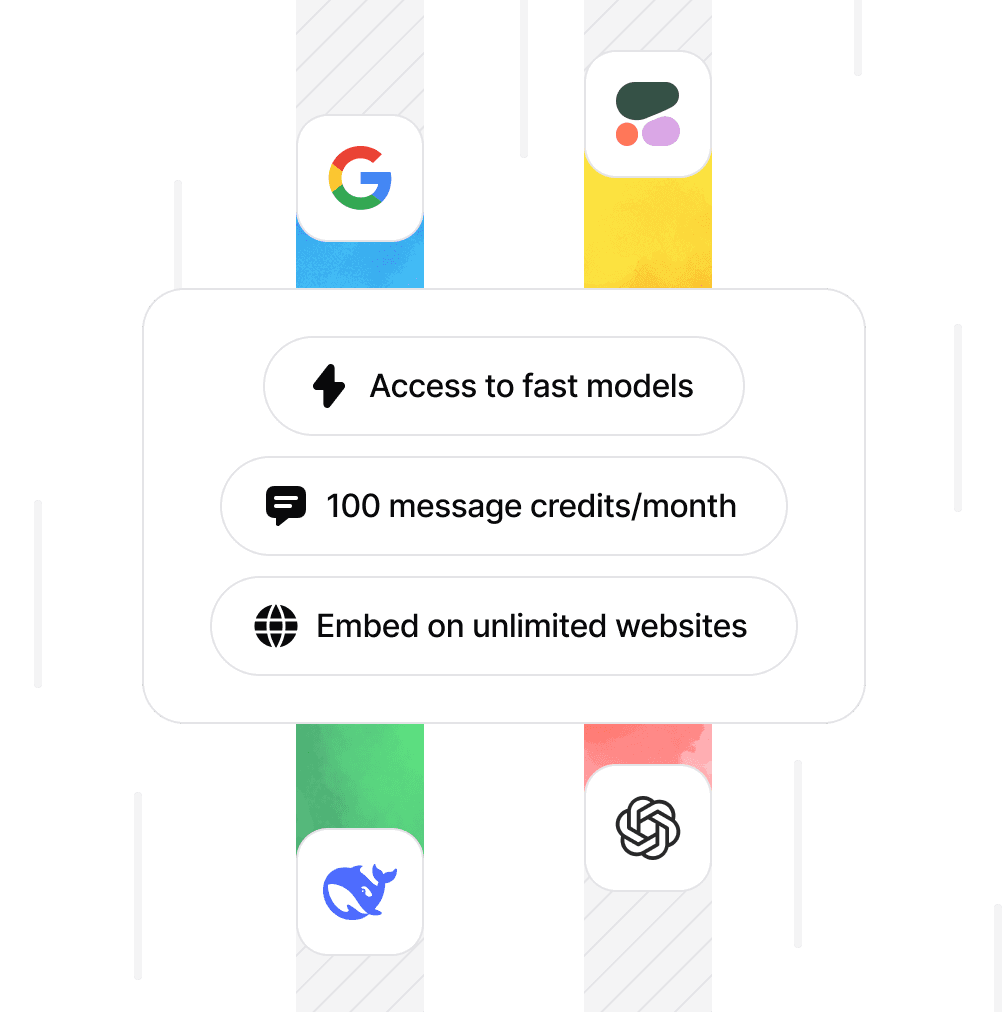
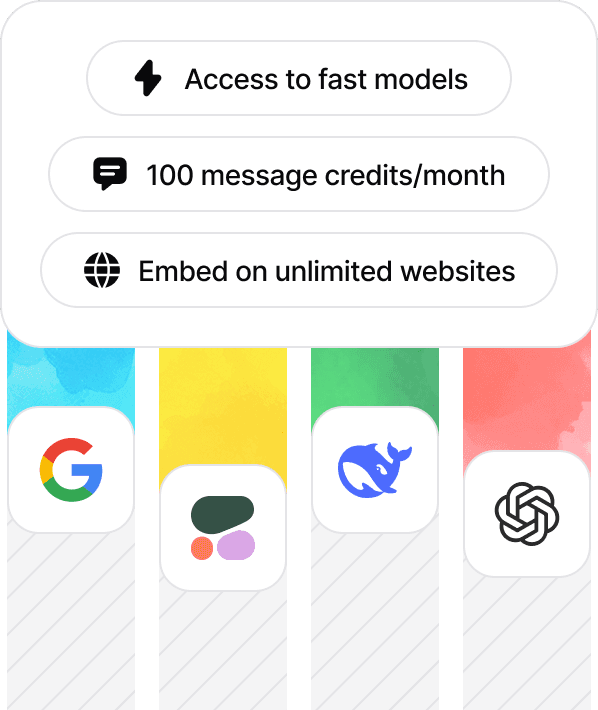
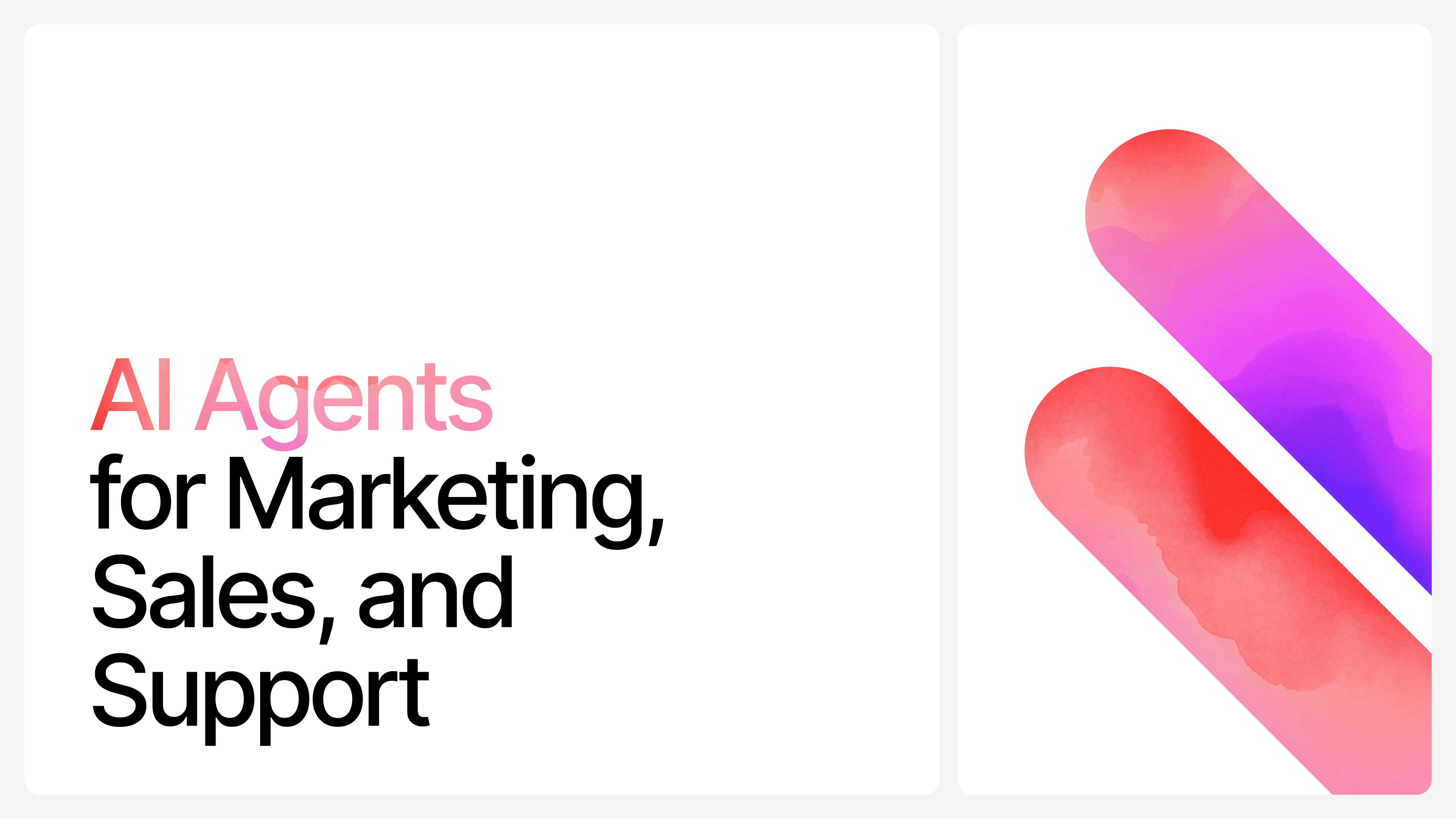
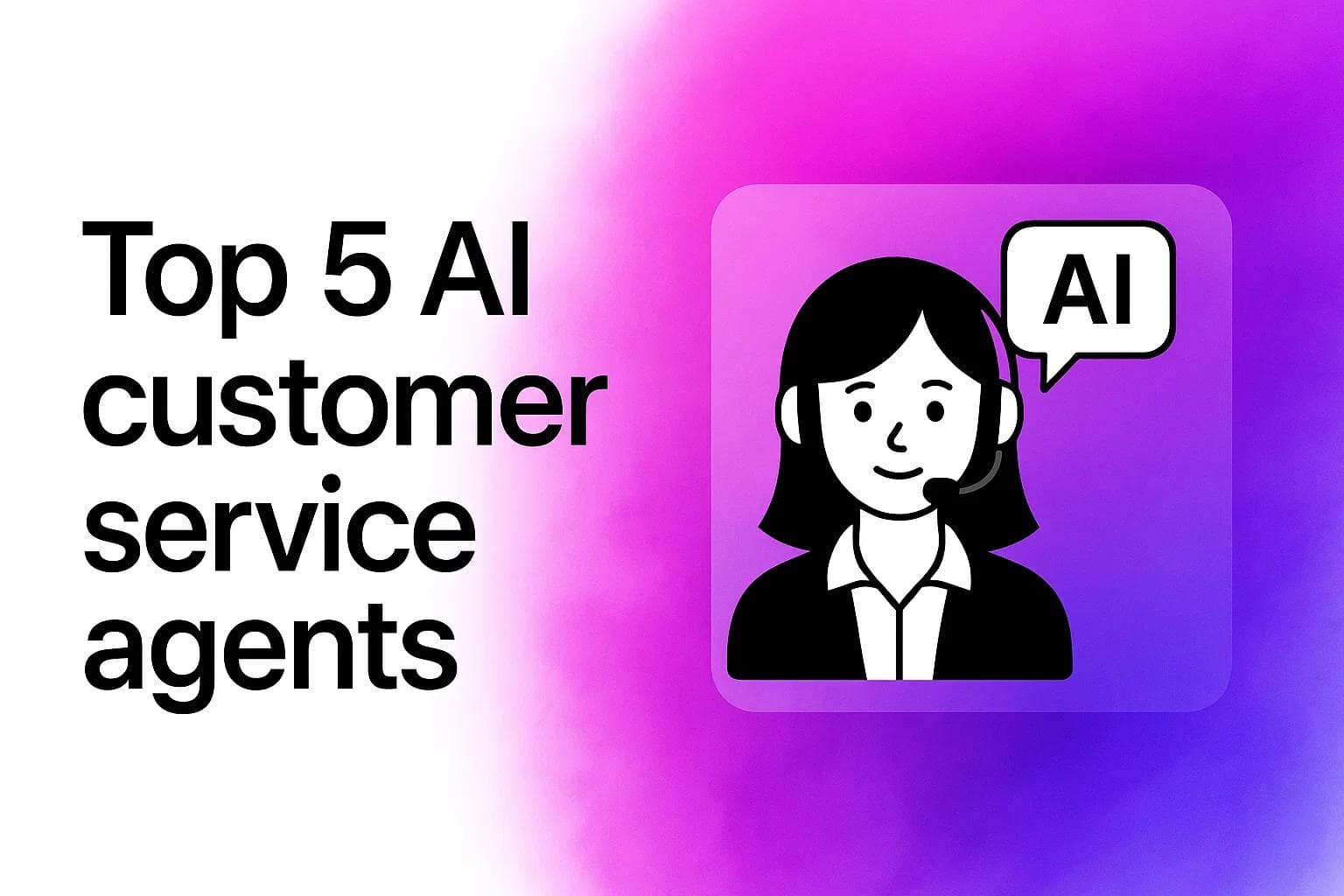



![How to access and use GPT-5 [2025]](/_next/image?url=https%3A%2F%2Fcdn.sanity.io%2Fimages%2Fi6kpkyc7%2Fprod-dataset%2Fb37c5291bb4f8846e841e87d6254d0cde2dc6c88-1536x1024.png&w=3840&q=75)